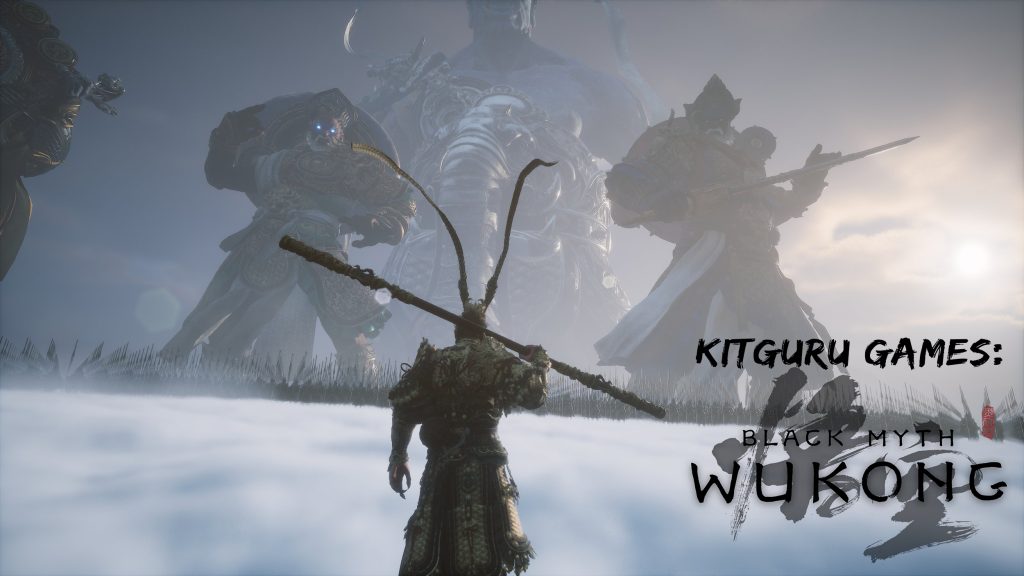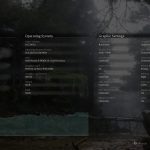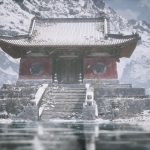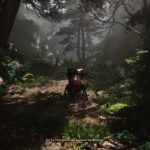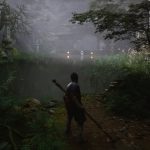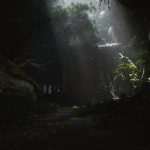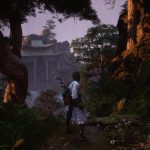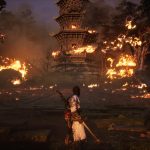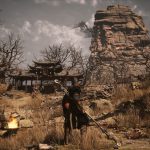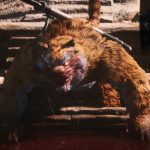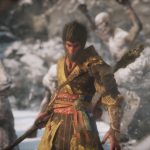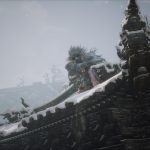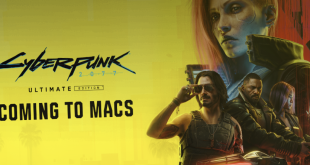Black Myth: Wukong has been out for just under a week, garnering over 10 million sales and millions of concurrent players across PC and PS5. While many have been referring to this game as a ‘souls-like' title, it is actually very different from the likes of Dark Souls and Elden Ring, taking much inspiration from games like God of War. This is apparent in both combat, but more importantly, it is apparent in storytelling, taking on a more cinematic approach, compared to the more passive story-telling style of the Souls games.
Breaking down the game:
Black Myth: Wukong is based on the famous Chinese story, Journey to the West, which has been adapted plenty of times in the past in various forms of media. Ninja Theory's ‘Enslaved: Odyssey to the West', was loosely based on the story. Akira Toriyama credited Journey to the West as part of his inspiration for Dragon Ball. Goku's name, Son Goku, is the Japanese pronunciation for Sun Wukong. Wukong is also the reason Goku fought with a staff, flew around on a magical cloud and had a monkey tail. These are just a couple of notable examples, but there are far more out there.
Like God of War, Black Myth: Wukong stars a magical being who has found himself on bad terms with the gods of the realm. While God of War is more focused on Greek and Norse mythology, Black Myth: Wukong is firmly based in Chinese mythology, with lots of Buddhist themes and a wide cast of characters. As someone who has always had an interest in ancient mythology, I was hooked by the premise pretty quickly and while some of the broad concepts are similar, the characters and fights feel fresh, with lots of anthropomorphic designs and grand-scale boss fights against all kinds of powerful deities.
There are some similarities to Souls like games. There are multiple paths to explore, secret bosses and shrines to find throughout the world, which act as save/respawn points. The game also has Souls-style boss fights, many of which will take multiple attempts to beat, but it is nowhere near as high a difficulty level and that primarily comes down to how agile your character is compared to the Souls games. It is far more like God of War, with its combination of exploration and storytelling. While many Souls games have passive storytelling, with lore drip-fed through environmental exploration, Black Myth: Wukong takes on a ‘show don't tell approach', with plenty of high-quality cutscenes and character interactions. You can't really play this game and ignore or miss the story in the same way you can in a Souls game, as so much of your character growth is tied to the trials and tribulations you face along the journey, and the characters you meet – akin to Kratos in God of War (2018), but with less of a stern attitude.
Sun Wukong is a fun character to play as, there is a playfulness to his personality, and it shines through in the way Wukong moves in battle. It is a similar marriage between combat utility and character that Insomniac achieved with Spider-Man. Wukong is very spry and athletic, leading to lots of spectacle moments in the heat of battle, whether you are going up against a massive boss or a lesser Yaoguai. While you start off with a basic spell and move-set, you can greatly expand your abilities through levelling up and spending ‘Sparks'. Certain abilities are locked behind a level cap or can't be unlocked until a certain point in the story, so you'll build up your powers one step at a time until you truly feel like the Monkey King.
The game features three distinct stances: smash, pillar, and thrust. Each stance comes with its own unique set of upgrades that players can unlock as they progress through the game. The stances primarily influence the heavy attacks, while your light attack combo will remain consistent across all three stances. Each stance seems to be geared towards helping in different situations. The Thrust stance is great for quickly closing gaps on the battlefield and catching enemies off-guard with a dashing heavy attack, which can be good for keeping up the offense against fast-moving bosses. The Smash stance is the basic stance that you start off the game with and is serviceable for most situations, with a combo that ends with you slamming the staff down in a hammer motion. The Pillar stance is my favourite and allows you to extend the staff to dodge ground attacks, and swing on the staff to hit multiple enemies at once, before leaping back and charging in for one big sweeping attack. During my time with the game so far, this is the stance that I have had the easiest time with.
You can further customise your combat with various spells. The first spell you obtain, Immobilize, is one of the most useful in the game, allowing you to instantly lock an enemy in place, even bosses, to get a quick flurry of attacks in, or to create a break in the fight for healing. Later on, you'll also have access to Cloud Step, a quick dash move that turns you invisible and distracts enemies with a decoy. You can exit your invisible form at any time with a hard-hitting attack that will knock enemies back. A Pluck of Many is another extremely useful spell, allowing you to summon clones to overwhelm enemies. If you've ever watched Naruto, it is essentially the Shadow Clone Jutsu, and like in Naruto, this ability can be quite overpowered in a lot of situations. As this game has no parry function, only allowing for quick dodges to avoid hits, Rock Solid is an ability that many will likely find useful. With this spell, you can momentarily turn to stone to deflect attacks and with some upgrades, deflecting an attack with Rock Solid will allow you to counterattack for big damage.
You also have access to a number of transformations. With your magical gourd, you can not only heal but also absorb the essence of a number of creatures in the game, some of which are obtained as part of the story, while others are obtained through level exploration.
Gear is not a huge focus of this game, but there is room to play around if you are looking to focus on a specific ability. You'll have the option to craft new gear sets, usually after a pivotal boss fight, and typically, the gear you craft has benefits for the ability you unlock for defeating the boss. For instance, defeating the Tiger in Chapter 2 will net you new gear that empowers the Rock Solid ability. The annoying thing I have found is that with the way each new gear set and ability is presented to you, you'll often feel like you have to switch to the newer gear due to the higher defensive rating, even if you have little need for the ability buff it provides. For instance, you'll obtain gear that buffs the Rock Solid spell shortly after unlocking it. This new gear set had higher defensive stats than my previous gear. However, I prefer using Cloud Step and had committed a number of resources into its upgrade tree, taking away the excitement from obtaining the new gear. I simply don't enjoy playing with Rock Solid as it doesn't fit with my shifty, speedy playstyle, but I didn't have any other high level gear that truly fit with my play style, creating a bit of a split between the way the game was guiding me to play and the way I actually wanted to play.
The good news is if you do prefer Rock Solid over Cloud Step, then you can respec your character at any time from a shrine, refunding all of your skill points to reassign. If you run into a boss that is giving you real trouble, then I would suggest going back to a shrine, playing around with some other abilities that might be more useful for the fight, practising a bit in the area before the boss and then going back in for the battle.
While I do love the combat in Black Myth: Wukong and the many, many boss fights, some of which are secret bosses that take a little extra effort to unlock, there are some issues. At launch, the camera can occasionally get stuck in awkward positions, particularly against large bosses, and sometimes you'll see hits not landing on bosses properly, seemingly due to hitboxes that don't quite match the visual representation of the boss. For me, this was particularly noticeable with one large, but skinny boss early on in Chapter 3. This will no doubt be cleaned up in future patches, but it is far from game breaking and the fights rarely have truly ‘unfair' moments.
PC Performance and Visuals:
Touching on PC performance and graphics, I have played the game both natively on my gaming PC, equipped with an RTX 4080 graphics card and Ryzen 9 5900X CPU, as well as on my Steam Deck via GeForce Now Ultimate, Nvidia's cloud gaming service powered by RTX 4080 GPUs. On my main PC, I run the game with the Cinematic graphics preset, DLSS 3 with Frame Generation ON, and Ray-Tracing turned all the way up. With these settings, I can easily run the game above 60FPS, usually around the 90FPS mark. However, in some later areas of the game, I have encountered a few more frame drops and stutters, so it can dip. Fortunately, as this is an Unreal Engine 5 game with support for Lumen lighting, you can switch off ray-tracing and still have a similar lighting effect driven through software. This will save you a ton of performance as ray-tracing effects are expensive to run, even on today's high-end hardware. I would recommend switching off ray-tracing if you have issues with DLSS 3 Frame Generation. I personally always use DLSS whenever its available and have become very used to it and rarely have issues with latency, although I'll occasionally spot the odd visual issue. However, others swear against Frame Generation and its latency effect. Unfortunately, Frame Generation is the only way to get this game running above 60FPS with ray-tracing ramped up.
Speaking of odd visual issues, I will say that sometimes with DLSS 3, the fog in this game can display pixelated artifacts from time to time and you'll also notice shimmering on Wukong's hair. This isn't noticeable in the heat of battle, but if you are standing still to scope out an area and turn the camera, it becomes very noticeable. I'm hoping this is something that can be improved in later patches, as this is not an entirely uncommon issue with DLSS-supported games and has been fixed in many other titles.
The game itself looks incredible. It is a true graphical showcase and looks fantastic on PC with all of the visual eye-candy turned up. Even at lower graphics presets, the game still looks great and there is a level of scalability here that means you can turn settings all the way down to run natively on a Steam Deck at 30FPS. With that in mind, even if you don't have the most up to date hardware, as long as you've put together your gaming PC sometime since 2016, you should be able to find a combination of graphics settings that works well for you.
I have also been highly impressed by how well the game runs via GeForce Now. Using the Linux beta version of GFN on my Steam Deck, I had the game set to Cinematic settings with RT and Frame Generation OFF, and the game capped at 60FPS to match the refresh rate of the Steam Deck display, as the Steam Deck does not have Variable Refresh Rate. My reasoning behind switching RT off here is simply due to the resolution and screen size of the Deck display – if I were playing on GeForce Now with a larger, higher-resolution display, then I would have played with RT switched on and it would have worked perfectly fine, as it does when streaming Cyberpunk 2077 on the Psycho preset. While I have had trouble with cloud gaming on certain devices, like a phone or tablet, on the Steam Deck, GeForce Now runs as perfectly as it does on my PC. The service has made great strides since I first began testing GeForce Cloud Gaming a decade ago. Nowadays, latency and control issues have been ironed out entirely and the visual presentation of the game displays no artifacts. At this point, GeForce Now Ultimate is so close to playing a natively installed game that I question if any of us should be spending thousands on our own gaming PCs nowadays, on top of the electricity cost for running high-end PC hardware.
With the game capped at 60FPS on the Steam Deck, you eliminate many instances of frame drops and get a very smooth experience, the kind of rock-solid performance that we typically associate with console games, but streamed over the cloud, without cooking your Steam Deck APU. I don't have the greatest WiFi in the world either, while I do get Gigabit speeds over Ethernet, my standard Virgin Media WiFi access points only manage around 20% of that speed, which is more than enough to stream a game nowadays. I don't know how Nvidia has done it, but many of the issues I have with other cloud services just aren't present here with GeForce Now Ultimate.
Should you buy Black Myth: Wukong?
Black Myth: Wukong is an exceptionally well-crafted game for a newer game studio like Game Science. There are some bugs here and there, but I haven't encountered anything game breaking, nor have I had the game crash on me in my 25ish hours of playtime so far. If you are highly skilled at action games, then you may be able to breeze through the story, but if you are more like me and spend a lot of time gaming across different genres, then you will find a good level of challenge here and you will get that same feeling of triumph and relief when finally toppling a major boss. Don't be afraid to go back to an area and grind a little if you are struggling. Sometimes, a few extra skill points can make all the difference. Speaking of grinding, the game is very respectful of the player's time, with level-ups being easy to obtain and you won't lose any XP upon death.
If you were expecting a really tough Souls-like game, you may be disappointed with Black Myth: Wukong as while it shares some similarities with those types of games, it is far more of a story-driven cinematic title. It doesn't have the same level of exploration as something like Elden Ring, as it has far more linear pathways in its level design, but you will want to look around in each level as there are secrets to discover, including easy to miss upgrades and special items and the occasional side-quest. Each area of the game also has its own secret boss and unlocking it will require that you explore each area thoroughly. It can be frustrating at times, as the game is so visually dense that spotting some pathways can be difficult and you'll often mistake pieces of the environment as pathways only to hit an invisible wall.
If you can look past that and simply want a fun new game to play with an interesting premise based in Asian mythology, and some of the coolest boss fights ever made, you should absolutely pick this game up. It is very beginner-friendly for an action game, just pay attention, make good use of all your abilities – even outside of boss fights, and if you have to, take fights slow so you can get comfortable with when to back away and create distance, and when to go ham on the combos. Finishing the game will likely take over 30 hours, but a veteran of the melee-action genre will be able to cut that down considerably by simply avoiding death and restarts.
Discuss on our Facebook page, HERE.
KitGuru Says: Have any of you picked up Black Myth: Wukong already? What do you think of the game so far?
 KitGuru KitGuru.net – Tech News | Hardware News | Hardware Reviews | IOS | Mobile | Gaming | Graphics Cards
KitGuru KitGuru.net – Tech News | Hardware News | Hardware Reviews | IOS | Mobile | Gaming | Graphics Cards


